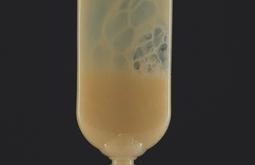In Kaikōura Lights, Caryline Boreham references New Zealand's most famous UFO sighting—the so-called Kaikōura lights—a series of sightings that occurred over December 1978.
In early January 1979, TV1 investigated the sightings, recording 16mm film footage of the night skies above Kaikōura. Next, 'high-tech' computer imaging processing techniques were used to analyse stills from the video, in an attempt to determine the intensity of the light source—which was then compared to that of the planet Venus. Boreham has recontextualised these images, found in the New Zealand Defence Force archives, to choreograph a series of moving lights that reflect reports by eyewitnesses and radar returns.
Since 'the great airship flap' in 1909, reported sightings of unknown objects flying over Aotearoa have been constant. The New Zealand Defence Force began keeping records on UFO sightings in 1952, along with numerous civilian organisations dedicated to researching the origins of these sightings.
Boreham has worked with these and other UFO archival records from Aotearoa since 2016, using the accounts, visual descriptions and correspondence as a foundation for her ongoing project. With an interest in the people and characters as sources, she explores a psychology of seeing, rather than what has been seen. In working with these artefacts, Boreham plays with a space between the event and its recounting, where the actual UFO sighting becomes secondary to the conviction of its truth.
— additional text adapted from Te Tuhi, 2023
-video,-9-mins.-commissioned-by-te-tuhi,-tamaki-makaurau-auckland.-photo-by-sam-hartnett-(2).jpg)
